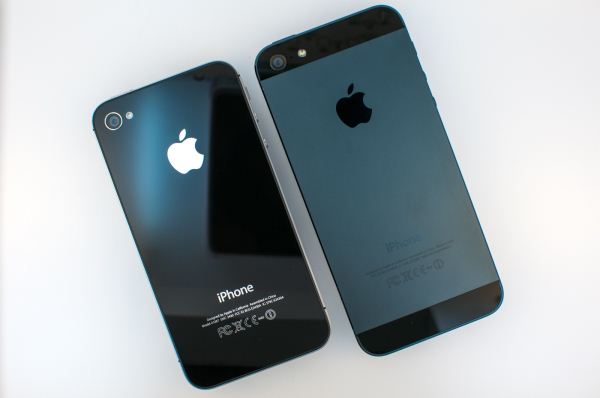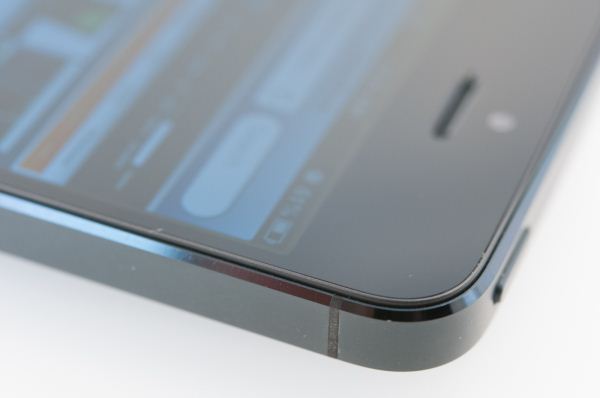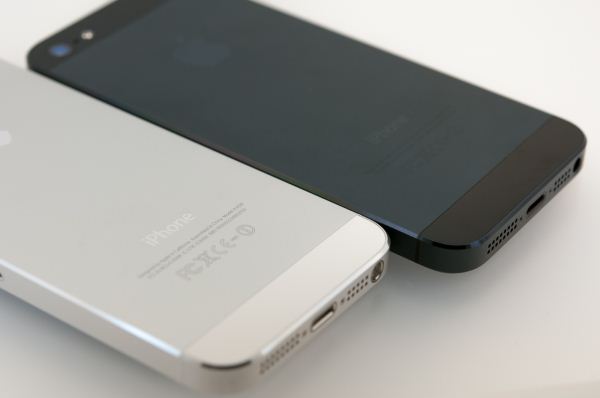The iPhone 5 Review
by Anand Lal Shimpi, Brian Klug & Vivek Gowri on October 16, 2012 11:33 AM EST- Posted in
- Smartphones
- Apple
- Mobile
- iPhone 5
Design
Section by Vivek Gowri
The iPhone 4, when it launched, represented a clean break for Apple's industrial design. It replaced the soft organic curvature of the iPhone 3G/3GS with a detailed sandwich of metal and glass, something that arguably brought the feel of a premium device to a new level. Obviously, Apple had their fair share of issues with the design initially, and nothing could match the sinking feeling of dropping one and shattering the glass on the front and back simultaneously, but it was a small price to pay for the jewel-like feel of the device. Combined with the (at the time) incredible pixel density of the then-new Retina Display, the iPhone 4 was a revolution in hardware design. The chassis has aged remarkably well over the last two-plus years, so naturally it's a hard act to follow.
The 5 keeps a similar design language to the 4, keeping roughly the same shape as before but with a taller and thinner form factor. At first glance, the 5 actually looks almost the same as the 4, with an unbroken glass front face, prominent corner radiuses, the familiar home button, a rectangular cross-section, and metallic sides with plastic antenna bands. However, those metallic sides are part of an anodized aluminum frame that makes up a majority of the body, and that's where the industrial design diverges from the 4 and 4S.
In contrast to the predominantly glass body of the previous generation iPhone, the 5 is almost entirely aluminum other than the glass front face and two small glass windows at the top and bottom of the back. It's a return to the original iPhone/3G/3GS-style of construction, with the front glass clipping into a unibody chassis. It's a significant departure from the 4 and 4S, where the stainless steel band in the center was the main housing that the front and rear panels clipped into. That was pretty radical way of doing things, so it's not all that surprising to see Apple revert to a more conventional and less complex method for the 5.
The aesthetic is actually pretty awesome, especially in the black version. The combination of black glass and off-black aluminum (Apple is calling it slate) gives the 5 an almost murdered out look that's three parts elegant and one part evil. The white and silver model has a classy look that's much friendlier in appearance than the black one. The color schemes and overall design aesthetic remind me of the Dell Adamo, one of my favorite notebook designs of all time. The similarities may be purely coincidental, but it's interesting to note nonetheless and should give you an idea of how premium the industrial design is.
All three previous iPhone body styles had very similar dimensions, so the biggest question with the 5 was how much the larger display would do to change that. Unlike many Android manufacturers, Apple still believes in things like small pockets, small hands, and one-handed smartphone usage. With the 5 being vertically stretched but no wider than the previous iPhones, the biggest impact on in-hand feel is actually the thinner body. If you're used to a larger Android or Windows device, the change seems radical, but even compared to the 22% thicker iPhone 4S, it feels a good deal smaller.
It's not just the minimized z-height though, the 25% weight loss is definitely also a factor. Even a few weeks later, I still find it striking how much less substantial it feels than the 4 and 4S. The densely-packed glass body just had a reassuring weight to it that the 5 simply lacks. But as you get used to the new form factor, you realize how far Apple is pushing the boundaries of ultrathin design. When the 4th generation iPod touch came out, I told Brian that I wanted an iPhone with that form factor - well, the 5 is essentially there (0.3mm thicker and 11 grams heavier, but close enough). It's pretty impressive to think about. If you thought the 4S was one of the best phone designs on the market in terms of aesthetics and build quality, the iPhone 5 just pushes that advantage further.



















276 Comments
View All Comments
Spunjji - Friday, October 19, 2012 - link
Incorrect. See HP Elitebook, Sony Vaio S15, Asus Zenbook, etc... that does depend on your definition of "trackpad that doesn't suck", but personally I'd take an Elitebook with actual buttons over the Apple effort any day, so that bit really is swings and roundabouts.doobydoo - Friday, October 19, 2012 - link
'so that bit really is swings and roundabouts'That's like saying a Ferrari is overpriced because you prefer cup holders so therefore you get more car for less when you buy a Skoda.
Also, you have to consider size, weight, battery life and performance.
You can't find a single laptop which matches the air on all of the above.
Sufo - Tuesday, October 16, 2012 - link
You're right to an extent, however it's worth mentioning that it's a lot easier to find unlocked non-apple phones at good prices on auction sites etc. It's very hard to get much less than list price on iphones, even several months after release.As for Macs, it depends entirely on which country you buy them in - in the UK for example, it is cheaper to buy a plane ticket to the States and buy a 15" w/ retina there than it is to buy one locally - the same could not be said for similarly specced PCs.
Spunjji - Friday, October 19, 2012 - link
Truth. Unfortunately Apple prices are subject to the perception that Apple products hold their value better, which in a purely practical sense really isn't any more true than for any other product. But the market does as the market does. :)Spunjji - Friday, October 19, 2012 - link
People who defend Apple's prices with fake numbers just want to whine about people who don't like Apple... see how easy that argument is to return? Please.A5 - Tuesday, October 16, 2012 - link
I'd say the smartphone market does a fairly good job of dropping prices on products that need it.The only product I can really think of that is an outstanding "value" proposition would be the $350 unlocked GNex combined with a prepaid plan. The current high-end devices (One X, GS3, iP5) all seem to be fairly priced relative to each other.
steven75 - Wednesday, October 17, 2012 - link
When I was looking at what I should price my 2.5 year old iPhone 4 at, I found the GS3 is already down to iPhone 4S prices on the resale market.Android phones just don't hold resale value vs iPhones, even the flagships, it's Mac vs PC all over again in that area. ;)
pseudonymmster - Tuesday, October 16, 2012 - link
"A processor license gives you the right to taken an ARM designed CPU core..."I think "taken" should've been "take" :D
karasaj - Tuesday, October 16, 2012 - link
Nice review guys... all I have to say :Pjjj - Tuesday, October 16, 2012 - link
On the scuffing, would you buy a car that rusts if you drive in the rain? This is clearly a design flaw, a sane company would recall the product and use a more apropriate material.You shouldn't be telling people to deal with it (except the ones that are happy to own the first colour changing phone).The size of the SoC in phones matters less and less as we go forward,more integration,more specialized cores,just because it's there it doesn't mean that much of the area is powered at the same time and the cost of silicon is less of a problem too.The limitation is power and /heat not area.
" if everyone moves to Cortex A15 based designs." - everybody ,in the high end, moves to quad Krait since A15 is likely to be just dual core for a while.
Nice review overall but,as always, your battery of benchmarks is misleading and no storage perf,really hoped for more to better understand this new core.